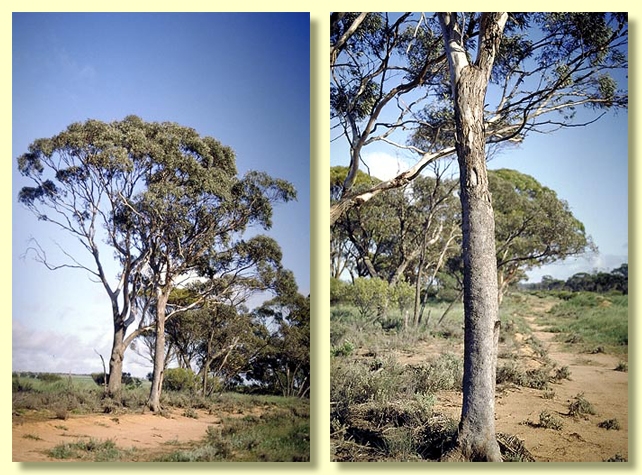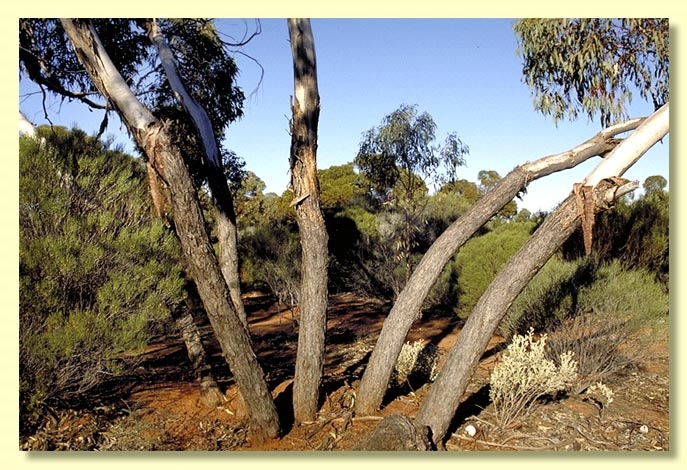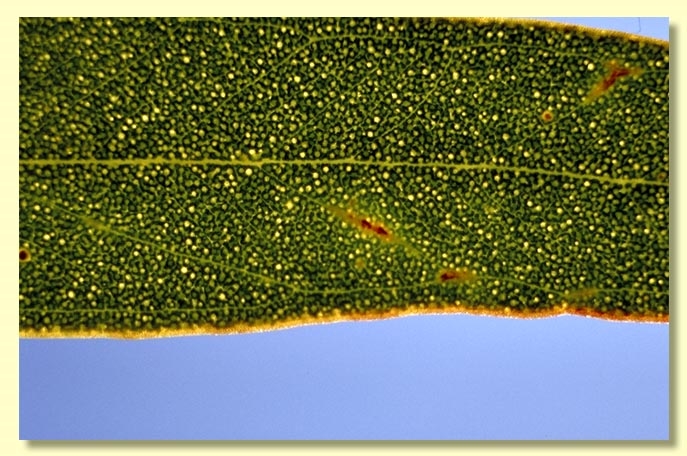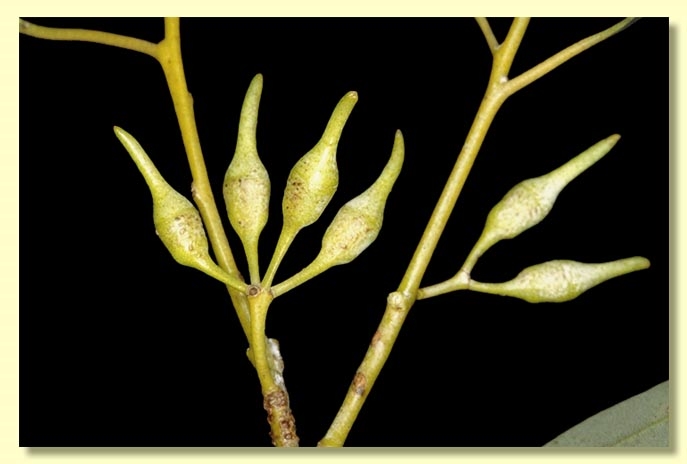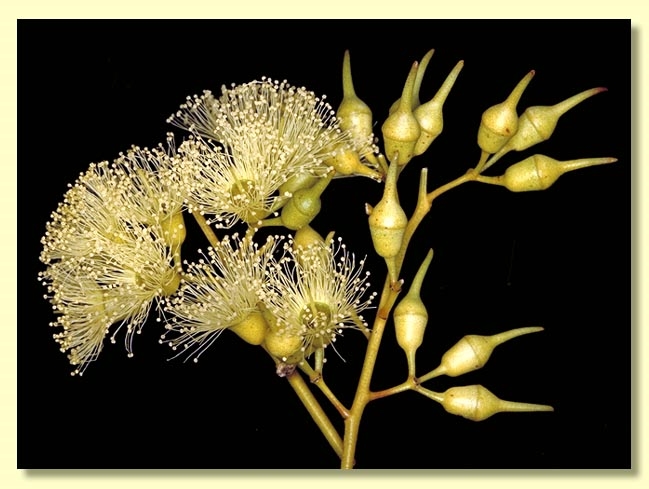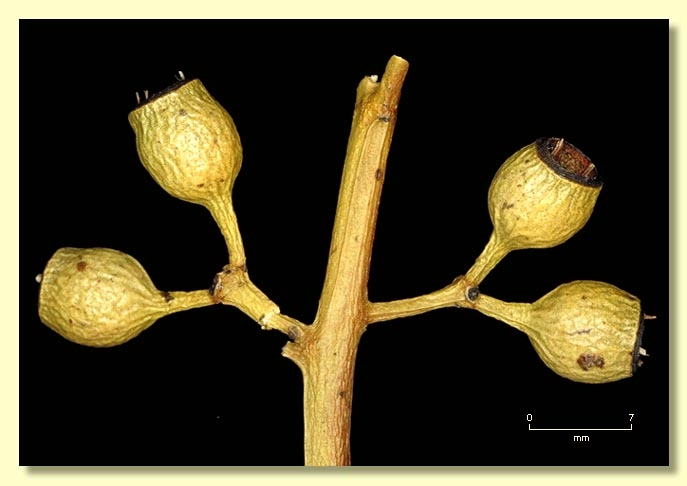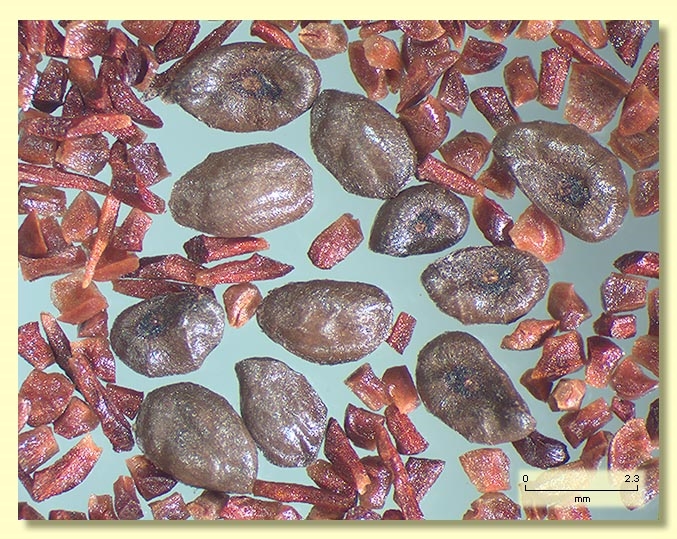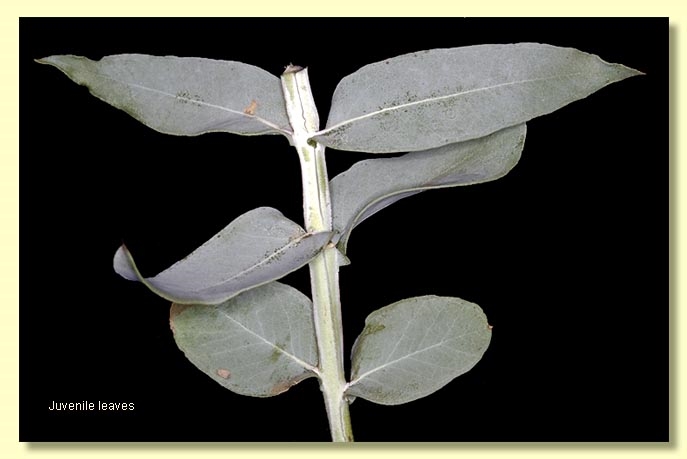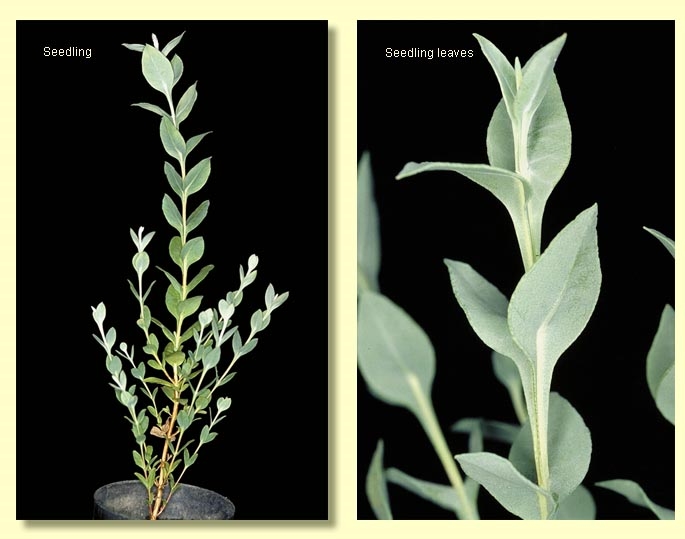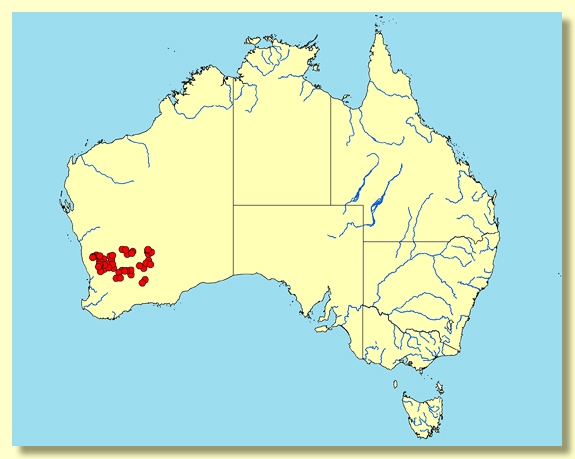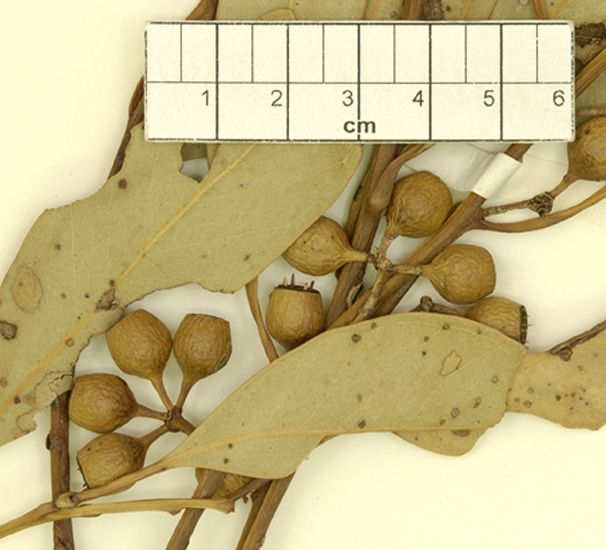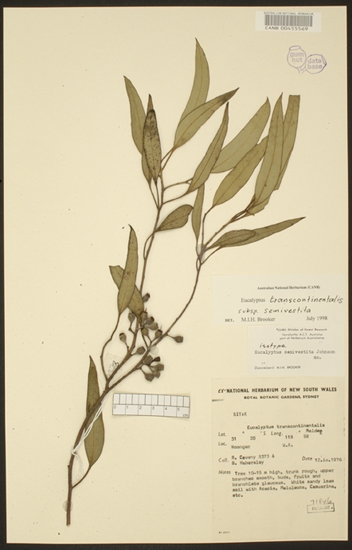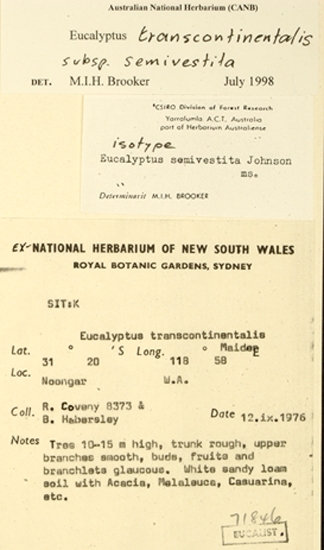Eucalyptus | Symphyomyrtus | Bisectae | Destitutae | Subulatae | Decurrentes
Euclid - Online edition
Eucalyptus moderata
Bark rough over most of the trunk, hard fibrous, sometimes extending to the larger branches, dark grey to black; smooth bark on upper trunk and larger branches, white to grey to creamy brown to pale pink.
Branchlets usually glaucous; lacking oil glands in the pith.
Juvenile growth (coppice or field seedlings to 50 cm): stem square in cross-section, glaucous to non-glaucous; juvenile leaves opposite becoming alternate further up the stem, sessile, ovate, base decurrent on stem, margin entire, apex pointed, 5.5–12 cm long, 2–4.5 cm wide, dull grey-green to glaucous.
Adult leaves alternate, petiole (1)1.5–2.5 cm long; blade lanceolate, sometimes falcate, 5 –13 cm long, (0.8)1–2.2(2.5) cm wide, base tapering to petiole, concolorous, dull, blue-green to green, side-veins usually at an acute angle to midrib, rarely wider, moderately to densely reticulate, intramarginal vein parallel to and just within margin, oil glands mostly intersectional.
Inflorescence axillary unbranched, peduncles 0.5–1.2 cm long, erect to pendulous; buds usually more than 7, rarely 7, pedicellate, pedicels 0.4–0.8 cm long. Mature buds ± ovoid to oblong or obovoid (1.4–2 cm long, 0.5–0.6 cm wide), usually glaucous, rarely non-glaucous, scar present, operculum beaked to horn-shaped (0.9–1.6 cm long), stamens irregularly flexed, anthers versatile, basifixed, globoid, dehiscing by slits, style long, stigma tapered, locules 3 or 4, the placentae each with 4 vertical ovule rows. Flowers pale yellow.
Fruit erect to pendulous, pedicellate, pedicels 0.4–0.7 cm long, urn-shaped to rarely barrel-shaped, usually glaucous but glaucescence weathering with age, 0.6–1 cm long, 0.5–0.8 cm wide, disc descending, valves 3 or 4, valve tips strongly exserted due to fragile style remnants.
Seeds brown to grey, 1.5–2 mm long, ovoid or flattened-ovoid, rarely pointed at one end, occasionally with shallow longitudinal furrows on otherwise smooth dorsal surface, hilum ventral.
Cultivated seedlings (measured at node 10): cotyledons Y-shaped (bisected); stems square in cross-section and prominently winged due to decurrent leaf bases; leaves opposite, sessile, linear for the first few nodes then ovate to elliptical, dull grey-green, 2–4 cm long, 1–2 cm wide, leaf base decurrent on stem.
Has been recorded flowering in winter and spring.
Commonly a mallee or small tree, occasionally developing into a medium-sized tree in the western part of its distribution. Endemic to the northern wheatbelt and central goldfields area of Western Australia, from the Three Springs–Dowerin–Watheroo area, west to the Menzies area and then north to the Lake Barlee–Lake Moore area. E. moderata is noted for its mallee or tree habit with lignotuber present, its rough bark on the lower trunk, its dull blue-green to green adult leaves, buds with a long horn-shaped operculum and its medium-sized urceolate fruit.
Eucalyptus moderata belongs in Eucalyptus subgenus Symphyomyrtus section Bisectae subsection Destitutae because buds have two opercula, cotyledons are Y-shaped and branchlets lack oil glands in the pith. Within this subsection E. moderata is part of a large taxonomic series Subulatae further characterised by globoid basifixed anthers, grey smooth seeds with shallow longitudinal furrows, and fruit with persistent exserted style remnants. Series Subulatae is divided principally into four subseries based on the juvenile leaves, one with spiral, crowded seedling phyllotaxis (subseries Spirales), another with decussate and strongly decurrent seedling leaves (subseries Decurrentes), another with decussate non-decurrent seedling leaves (subseries Decussatae), and a fourth with disjunct, petiolate seedling leaves (subseries Oleaginae).
Eucalyptus moderata is part of subseries Decurrentes. It is closest to E. transcontinentalis (from the southern and central goldfields), E. hypolaena (from east of Kalgoorlie) and E. optima (from the eastern goldfields). E. transcontinentalis and E. optima are easily distinguished by having smooth bark over the entire trunk. E. hypolaena and E. moderata both have rough bark on the lower trunk. E. hypolaena is distinguished by having larger buds and fruit, the fruit being truncate-globose rather than urceolate, as they commonly are in E. moderata.
In the western part of its range, E. moderata may be confused with another closely related species E. dolichocera. Both species look very similar in their adult features. E. dolichocera belongs to another subseries in the Subulatae that has non-decurrent juvenile leaves.
Eucalyptus trancontinentalis subsp. semivestita is now regarded by the authors of EUCLID, and by Dean Nicolle (2005a) in his recent comprehensive revision of Eucalyptus series Subulatae, as being synonymous with E. moderata, rather thana subspecies of E. transcontinentalis. It has rough bark over at least part of the stem, a lignotuber and juvenile leaves that are strongly decurrent. Eucalyptus transcontinentalis is smooth-barked and lacks a lignotuber but does have strongly decurrent juvenile leaves.

